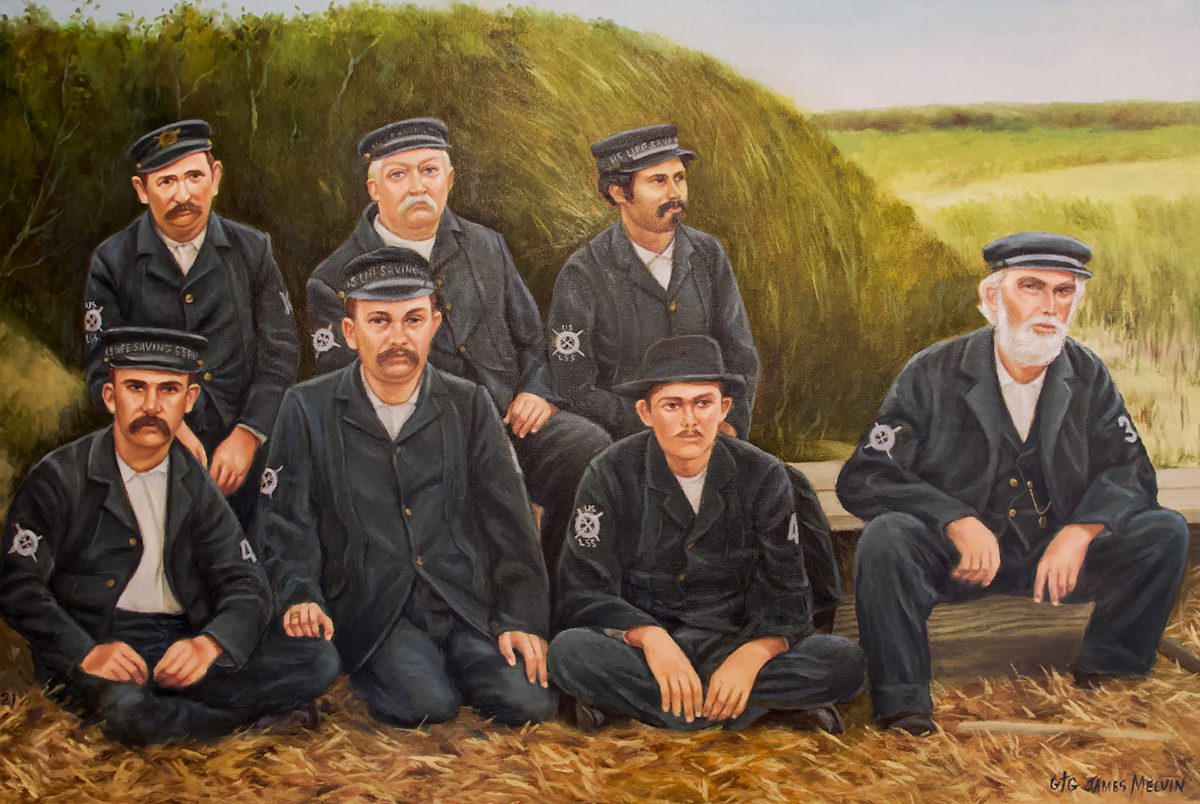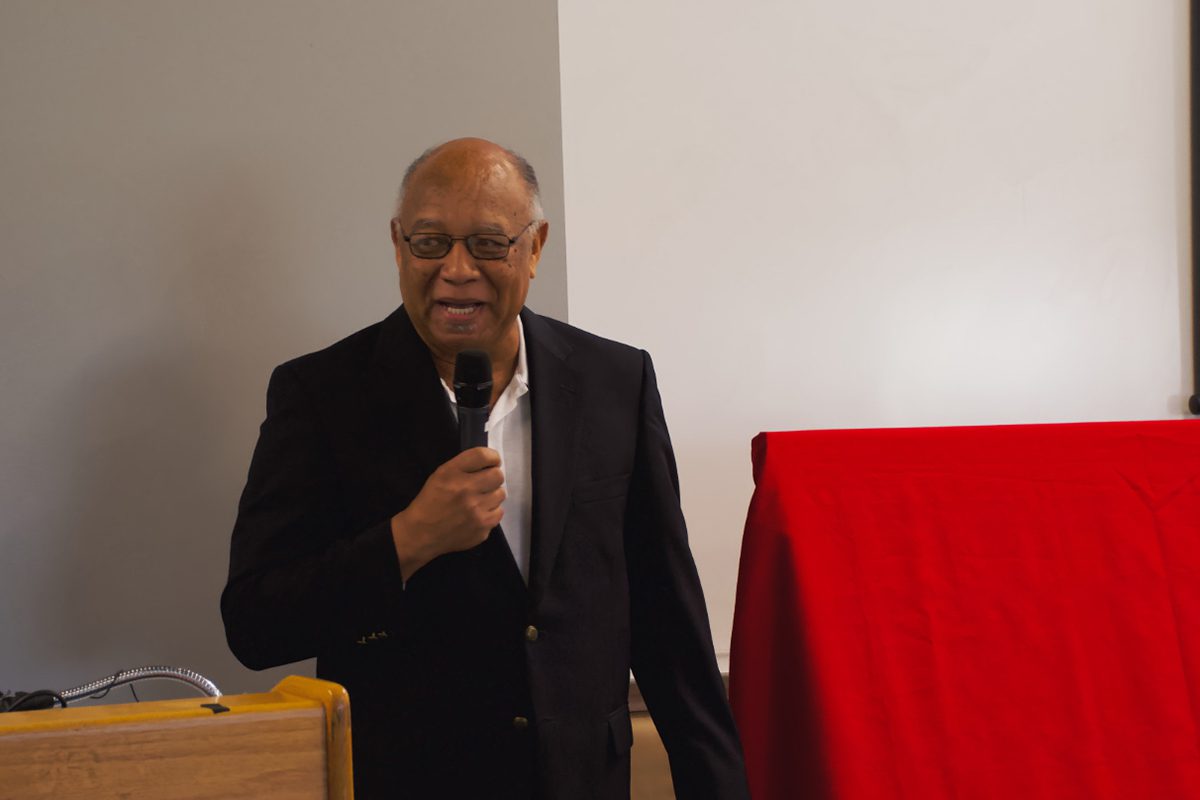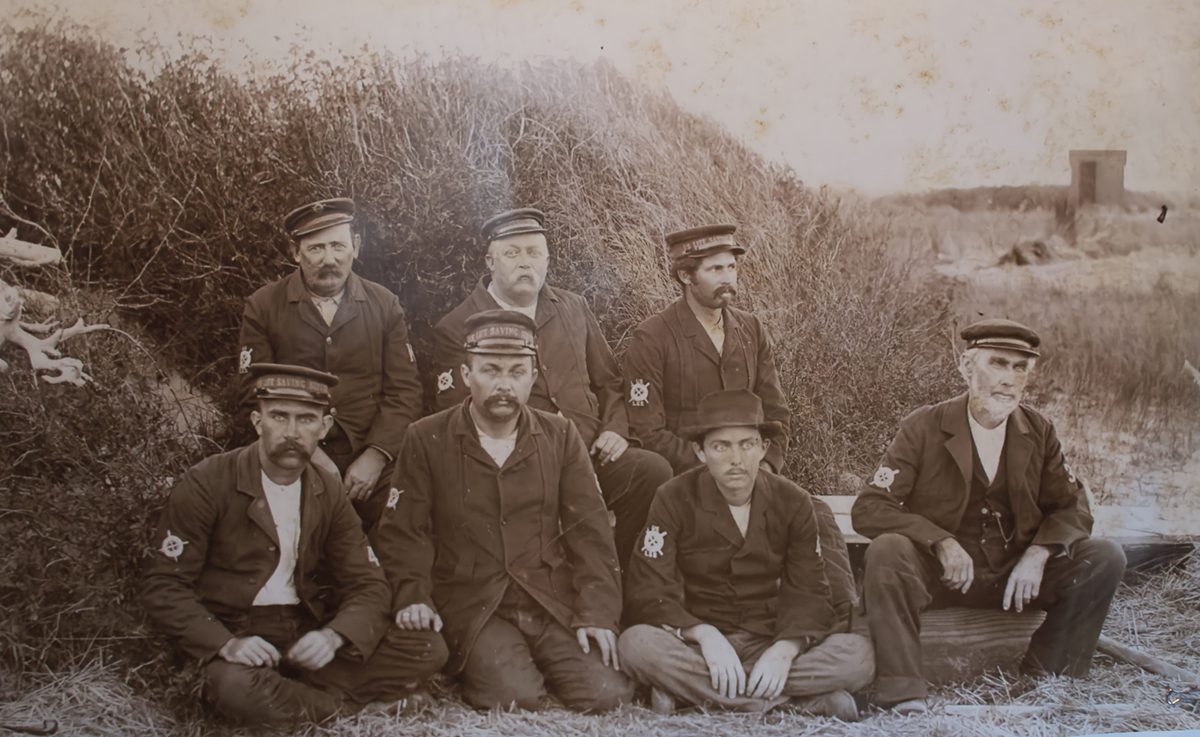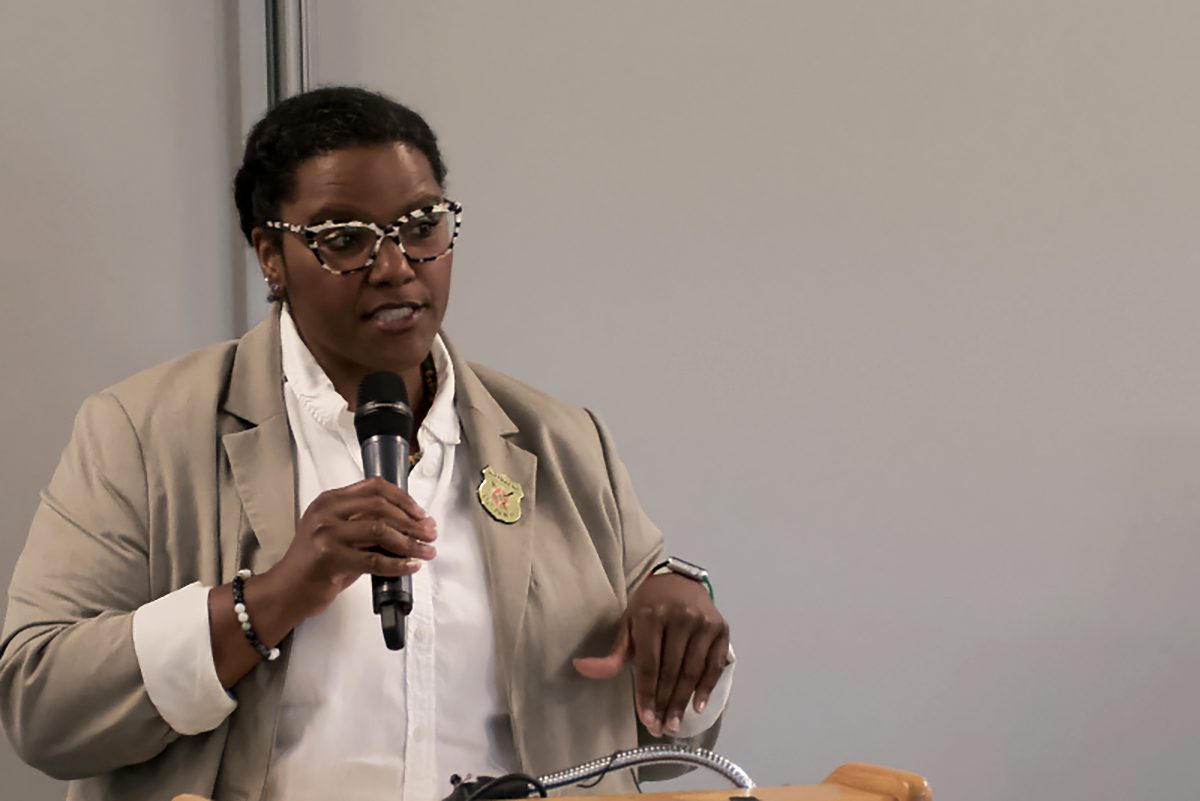
The vibrant, full-color painting “The Checkerboard Crew,” a depiction by Outer Banks artist Jim Melvin of a 1910 black-and-white photograph of United States Life-Saving Service crewmen, was unveiled recently at the College of the Albemarle Dare County campus in Manteo.
Organized by the Pea Island Preservation Society Inc., the March 4 unveiling was postponed from its original date of Feb. 18, during Black History Month, because of health concerns of some members of the society.
Supporter Spotlight
The painting will be on display at the society’s Pea Island Cookhouse Museum in Manteo. Tentative plans to display the painting throughout the Outer Banks are under discussion.
The checkerboard crews were crews of the Life-Saving Service typically staffed with five white and one Black crewmen, although there were some instances where two African Americans worked at a station. The Black crewmen were usually listed as surfmen No. 5 or No. 6, the lowest ranks at the station.
Melvin, who has lived in Nags Head since 1982, is perhaps best known as the illustrator of the children’s Nature Series books by Suzanne Tate, but the body of his work includes street scenes from the Caribbean, depictions of Outer Banks beaches and homes, shorebirds and more.

As he worked on the painting, Melvin, who is African American, found himself wondering about some of the details he observed of the men in the photo. In particular, he noticed the Black crewman was not facing the camera.
“If you notice this fella here,” he said, indicating the man in the upper right side of the painting. “He’s completely turned and I wondered was that because he just doesn’t like taking pictures? Some people don’t like things like that. Or was he thinking about his situation when he turned his head away?”
Supporter Spotlight
The “Checkerboard Crew” is the most recent in a series of paintings Melvin has of checkerboard crews.
Other paintings in the series depict scenes from the Pea Island Life-Saving Station including the rescue during a hurricane of the crew of the schooner E.S. Newman on Oct. 11, 1896, by the all-Black Life-Saving Service crew of Station Pea Island. Under the leadership of Capt. Richard Etheridge, the first Black station chief for the Life-Saving Service, the Pea Island crew rescued all nine people on the ship, including the captain’s 3-year-old son.
One hundred years after the Newman shipwreck, descendants of the Pea Island crew were awarded the Coast Guard’s Gold Lifesaving Medal, the service’s highest honor for heroism in a water rescue.
These paintings are housed at the North Carolina Aquarium on Roanoke Island, where Etheridge and his family’s graves are on the grounds.
The checkerboard crews may have been the first integrated military installations in the country, although the integration was a matter of necessity not law.
When Sumner Kimball became superintendent of the U.S. Life-Saving Service in 1878, he was determined to transform an organization rife with political cronyism and incompetence into a professional service capable of performing its mission, according to Coast Guard history.
Kimball also pushed Congress to expand the number of lifesaving stations throughout the nation, and on the Outer Banks, 11 new stations were added in 1878.
Black watermen offered a ready source of skilled watermen, and checkerboard crews were formed, although the African American crewmen were the lowest-ranking crewmembers and had no chance for advancement.
It was from the Bodie Island crew that Kimball, on the recommendation of his inspector, 1st Lt. Charles Shoemaker, promoted Surfman No. 6 Etheridge to Station Keeper Etheridge of Station Pea Island.
It is unclear whether the white crew at Pea Island refused to work with Etheridge or if Shoemaker recommended an all-Black crew, but beginning in 1880 the Pea Island Station was staffed exclusively by African Americans and it remained that way until it was decommissioned in 1947.
Many of the descendants of the Pea Island crews still live on the Outer Banks, most of them on Roanoke Island.
For Joan Collins, the Pea Island Preservation Society’s director of outreach and education, the event offered an opportunity to bring the story of the checkerboard crews and Capt. Richard Etheridge and the legacy of Station Pea Island into the present day. Five young descendants of Pea Island Station crewmen spoke, describing their connection to the men who served under Etheridge.
“I’m a descendant of the checkerboard history of the Pea Island Life-Saving Station. My great-great-grandfather is Joseph Hall Berry who served under keeper Richard Etheridge,” 13-year-old Jason Berry said. “My family history is the history of the enslaved and the Native Americans who once lived on Roanoke Island.”
His remarks were echoed by the other young speakers at the event.

A wider discussion on race
Collins, though, felt the day provided a chance to have a wider discussion of race in our history and how it continues to impact lives.
“I was trying to get people to think (about race). That’s what we wanted to do,” she said.
Collins began her talk reciting “You So Black,” a powerful poem by Theresa Wilson that is ultimately one of hope and empowerment.
“You so Black, You so Black, when you smile, the stars come out. You so Black, when you were born, the God come out …” the poem begins. The poem goes on to weave the past and present together. “… I’m Black like my granddaddy and my great-great-great-great-grandmama … Black is that letting your freedom ring and resound. Black is adjective, adverb, color and noun …”
For Collins, the poem connected directly with the story of the checkerboard stations. “I think it is a poem … that reminds us of a time when people were categorized strictly as being either Black or white,” she said.
She pointed out that in 19th century America, that categorization diminished people of color to an extraordinary degree.
“Being viewed as white, in Etheridge’s time, was seen as the normal way. That is what people were expected to be, white and not Black, and it was viewed as the right way to be,” she said.
The relevance of the poem, she went on to say, extended beyond “You So Black.”
“Take the word ‘Black’ out and substitute it for any minority. Think about it substituted with the Native American history. Native Americans that were categorized as being Black. Substitute it for the Latinos who are here today. Substitute it for the equal treatment of women, gay, transgender, any minority person that is not being treated fairly or justly,” she said, adding. “That is what this history is about.”

The last speaker of the day, the Rev. Dr. Michelle Lewis, spoke of painful personal memories and how they are a part of a shared history.
Lewis, who grew up in Manteo, recalled her first day in sixth grade and the teacher who insisted that the siblings she had in school could not all have the same parents “… because Black children don’t all have the same mother and father.” And the history teacher in high school who “… skipped all the chapters if there was a chapter or a section about Black people, it was just skipped.”
And she referenced a more recent event that took place at the high school in Kill Devil Hills.
“One of the first things I was asked to do in 2019 (when she returned to the Outer Banks) was sit on a task force because somebody had spray painted some stuff onto the lockers … that included the N-word,” she said.
Those personal events combined with the more recent incident were, to her, a reminder of the importance of acknowledging where we have been so that we can better understand how to move forward.
“That’s why we’re talking about this today. That’s why we’re talking about the history because our histories are important. Yes, these stories about Pea Island Lifesavers and the checkerboard crews, they’re important to me because they’re the stories of my ancestors. But they’re important to all of us because they’re the stories of our shared heritage. The failure to learn and understand our collective histories means we’re sure to repeat the past and we have a choice. Are we choosing ignorance instead of growing in knowledge,” she said.







